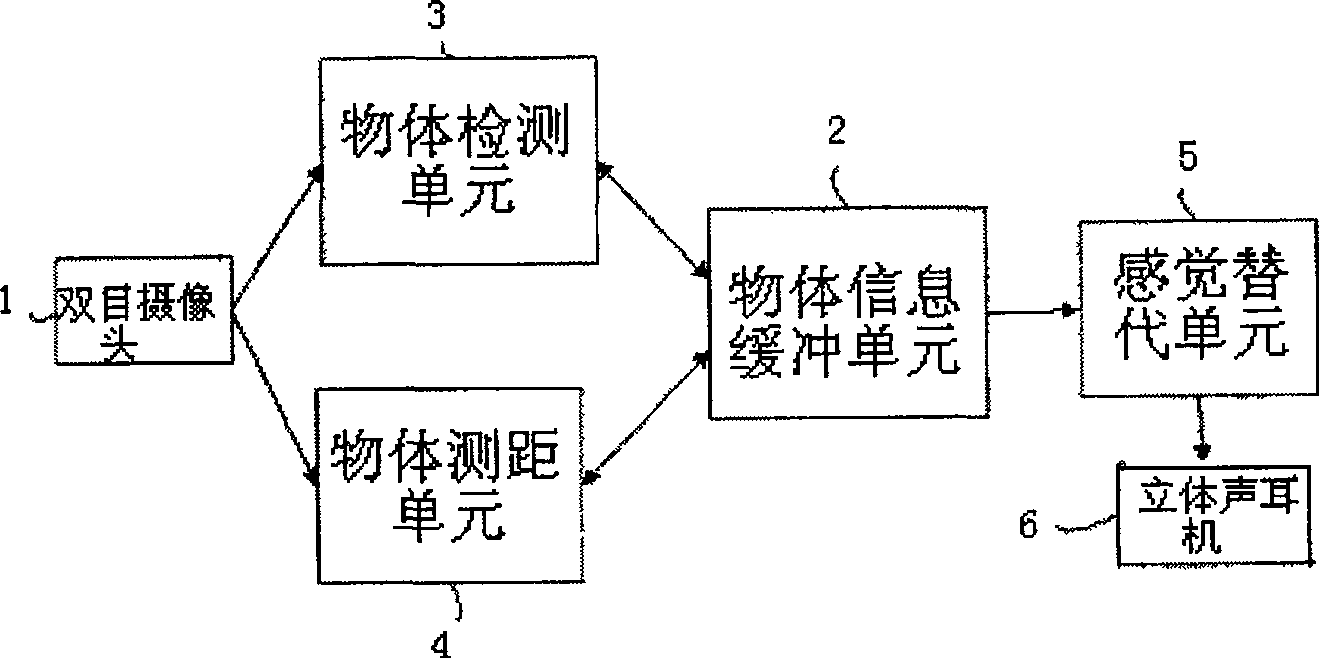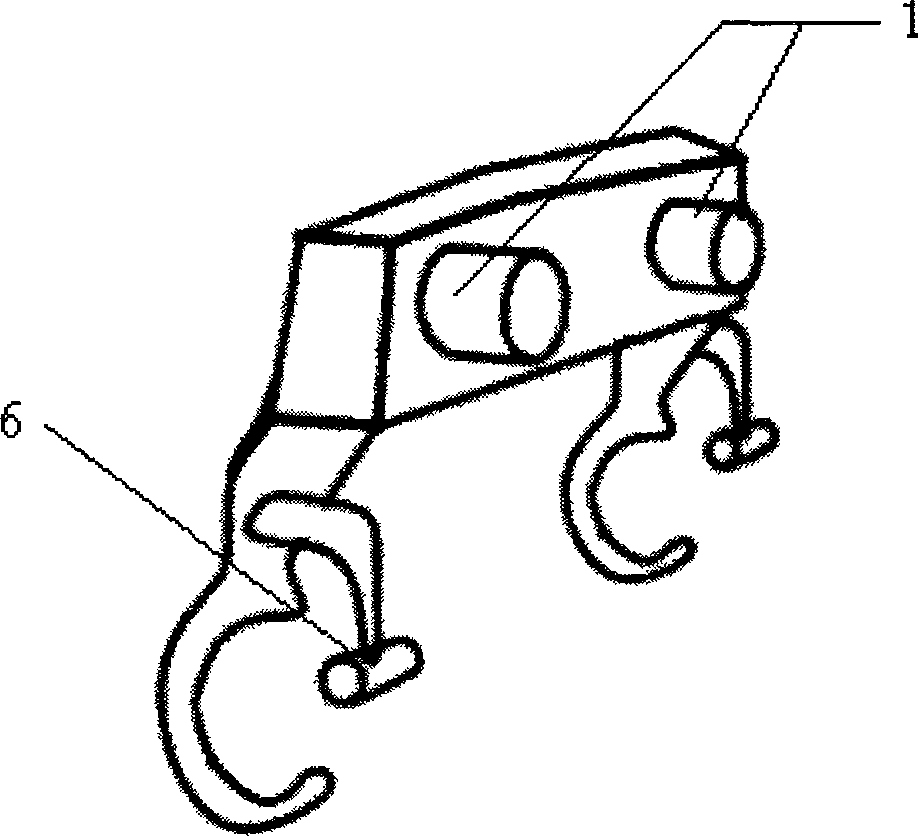Blindman assisting device based on object identification
An auxiliary device and object technology, applied in physical therapy, devices to help people walk, ophthalmology treatment, etc., can solve the problems of original object movement, time extension, and reduce the speed of blind people to obtain environmental information, so as to avoid false negative errors, The effect of improving efficiency and avoiding false positive errors
- Summary
- Abstract
- Description
- Claims
- Application Information
AI Technical Summary
Problems solved by technology
Method used
Image
Examples
Embodiment
[0026] Such as figure 1 with figure 2 As shown, this embodiment combines attention sorting and object recognition based life assistance device for the blind (hereinafter referred to as the device) including an object information buffer unit 2, an object detection unit 3, an object ranging unit 4, a sensory substitution unit 5, and the aforementioned units A binocular camera 1 and a stereo headset 6 are also equipped on the blind person's head. The binocular camera 1 is a common component of the object detection unit 3 and the object ranging unit 4. It not only provides the reference image (usually the right image) in the binocular vision image to the environment image used by the object detection unit for detection, but also The visual image is provided to the object ranging unit. The advantage of this is that the object detection and ranging are performed in the reference image of the binocular vision image, which simplifies the image processing process. When the device is work...
PUM
 Login to View More
Login to View More Abstract
Description
Claims
Application Information
 Login to View More
Login to View More - R&D
- Intellectual Property
- Life Sciences
- Materials
- Tech Scout
- Unparalleled Data Quality
- Higher Quality Content
- 60% Fewer Hallucinations
Browse by: Latest US Patents, China's latest patents, Technical Efficacy Thesaurus, Application Domain, Technology Topic, Popular Technical Reports.
© 2025 PatSnap. All rights reserved.Legal|Privacy policy|Modern Slavery Act Transparency Statement|Sitemap|About US| Contact US: help@patsnap.com



